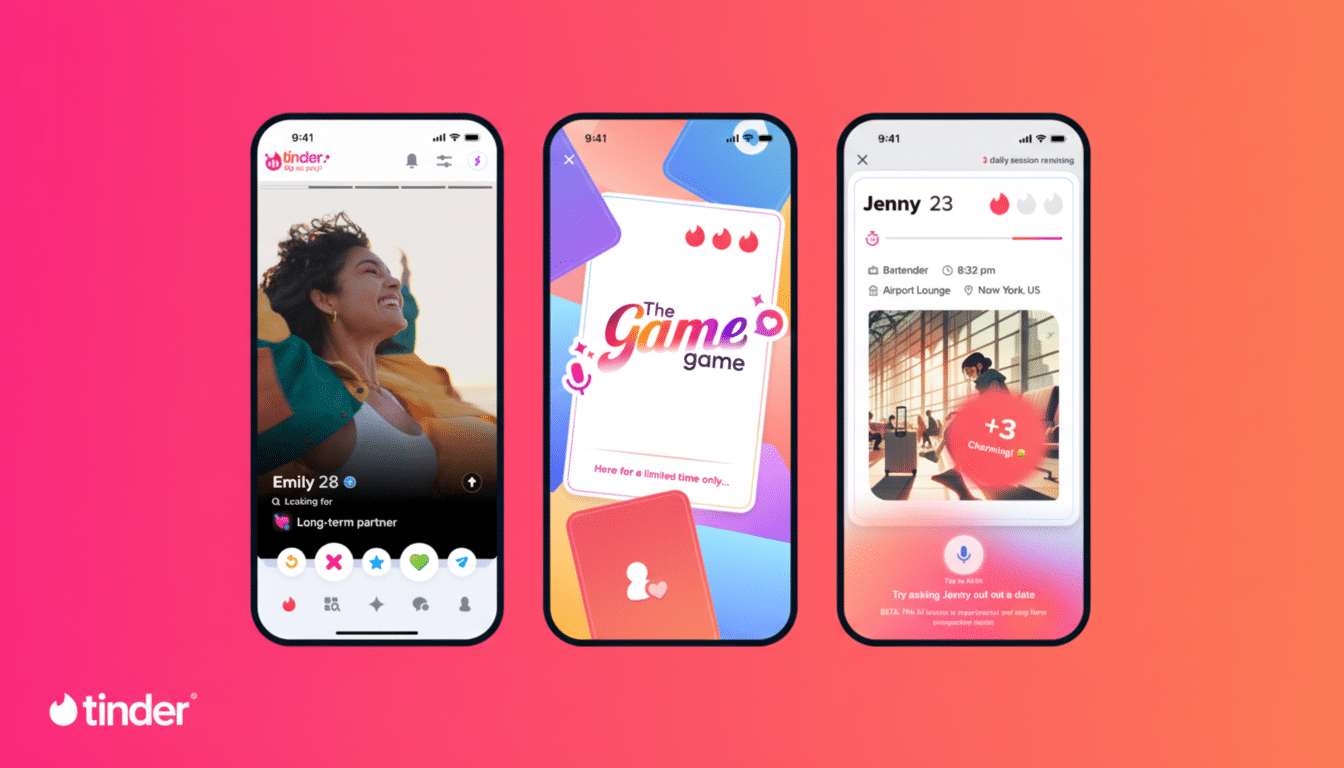Tinder is testing a new matching element, an artificial intelligence-driven feature called Chemistry, which is designed to surface potential partners by analyzing user signals and, with permission, information from a phone’s camera roll. The idea sounds easy: fewer endless swipes per day, more meaningful conversation and deeper connections with an eye toward the match that’s meant to last.
What Chemistry Seeks to Accomplish for Matchmaking
Chemistry is designed to show a limited number of profiles each day, and the service hopes that limiting user choice will lead to better matches. Tinder has used A.I. previously to make photographs look better and sort out untoward messages, but this tool now moves upstream into the heart of matching, not merely perfecting profiles or policing behavior.

With an explicit opt-in, Chemistry can scrape images in a user’s photo library to infer themes — think hobbies, social scenes or aesthetic preferences — that sometimes get lost in the short bio curation. As the company has not released details about the models, this follows along with how recent vision models can learn detailed patterns without just focusing on text prompts or profile cues.
A spokesperson has billed the bet a small one — by offering up just a few powerfully relevant profiles every day, Chemistry should increase people’s compatibility, fire up richer chats, and sap some of the grind out of dating apps.
Why Tinder Is Embracing AI Now to Boost Matches
Match Group, Tinder’s parent company, informed investors that Tinder lost direct revenue and paying users year over year in Q2 — 3% and 7%, respectively — but it also grew them for the same metrics at Hinge (another Match Group property) by 27% and 17%. Those numbers paint a changing picture, in which younger daters are testing the waters and wanting more signal and less noise.
In the past year, Tinder has added verification steps including facial scans for new U.S. accounts and in-app additions like Modes that allow users to enter two-on-two double dates and identify as students. Chemistry follows a similar playbook: shave off friction to clear a path for serious users, and come up with better-quality matches that’ll be worth the searching, even if you’re not getting as many total swipes.
Industry-wide, artificial intelligence has gone from gimcrack novelty to infrastructure. Hinge’s “Most Compatible” and Bumble’s recommendation adjustments each try to predict mutual appeal; safety models on big services like these scan for fraud or harassment. Chemistry is Tinder’s effort to make its feed feel less like an open market and more like a closely curated short list.

How It Might Work in Practice for Tinder Users
Consider a user whose feed is full of trail photos, group dinners and concert shots. Chemistry could elevate profiles with similar contexts or that cue compatible energy — matching people who feature in outdoor settings, have the same taste in music or share parallel social patterns — without them needing to spell it all out on a bio.
This is the pragmatic appeal of multimodal matching. Profiles get more than just static photos and a handful of ‘likes’ to tell a full story; they are directly mixed in with users’ behavior and instant visual cues that link back to lifestyle, showcasing true lifestyle destinations. When the execution is right, helping users find such a match should take less time than getting someone to commit long-term in “real life,” and users should be able to more easily find someone that feels on wavelength and make a decision of whether or not they want to meet.
Privacy and Safety Questions for AI Matching
A company that can search through a camera roll might raise predictable concerns. Chemistry would be opt-in, Tinder says, and best practices would involve transparency about where the analysis is taking place (on-device versus in the cloud), what data is stored and whether images or derived signals are used to train models. Being GDPR and now CCPA aware also means that expectations around consent, minimization and access can be a factor for Tinder to communicate more clearly.
And on the safety end, Tinder is already using AI to catch offensive and suspicious messages, while facial verification seeks to tamp down on catfishing. If Chemistry can increase match quality, it may have an indirect effect on user safety as there will be less exposure to actions from low-intent or fraudulent profiles. Nonetheless, transparency around opt-outs and controls is key to building trust.
What to Watch Next as Tinder Tests Chemistry
Chemistry remains in a very limited testing phase and is not publicly available. Key metrics to watch are response rates for suggestions, conversion of first dates and churn among new users. If daily curated picks lift those metrics, prepare for broader rollouts and deeper AI personalization throughout the app.
The larger lesson is that matchmaking is reimagined around AI that goes deeper than the profile card. But if Chemistry can make the ordinary topical and relevant to relationships, then Tinder may just capture a little of that new app hue in this crowded market. If not, the experiment will at least force the industry into opt-in personalization that’s more transparent and values quality over quantity.

